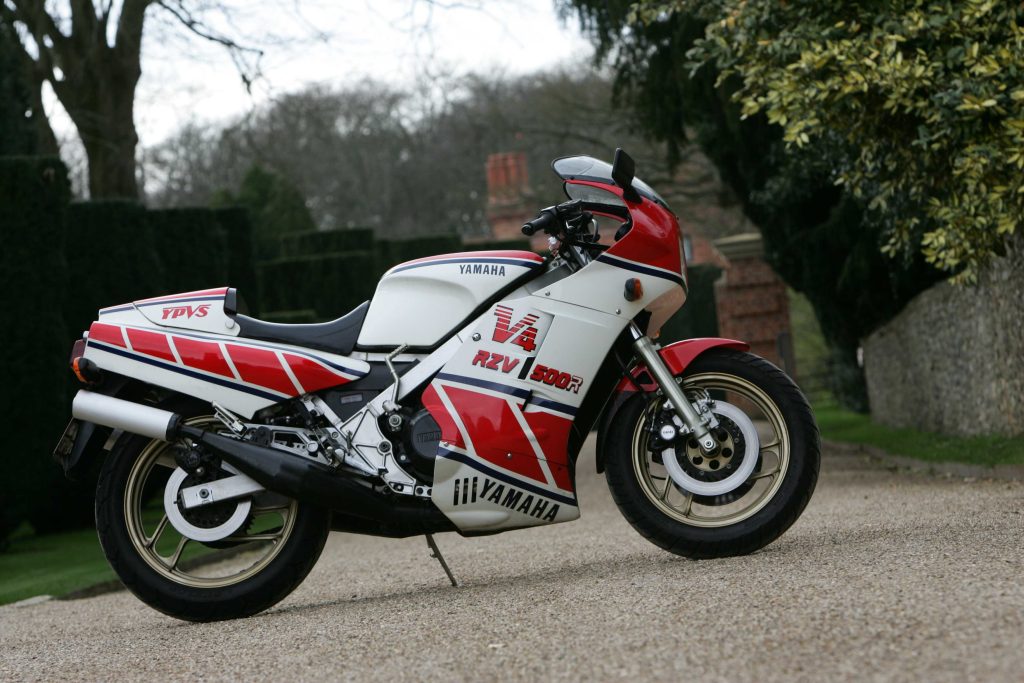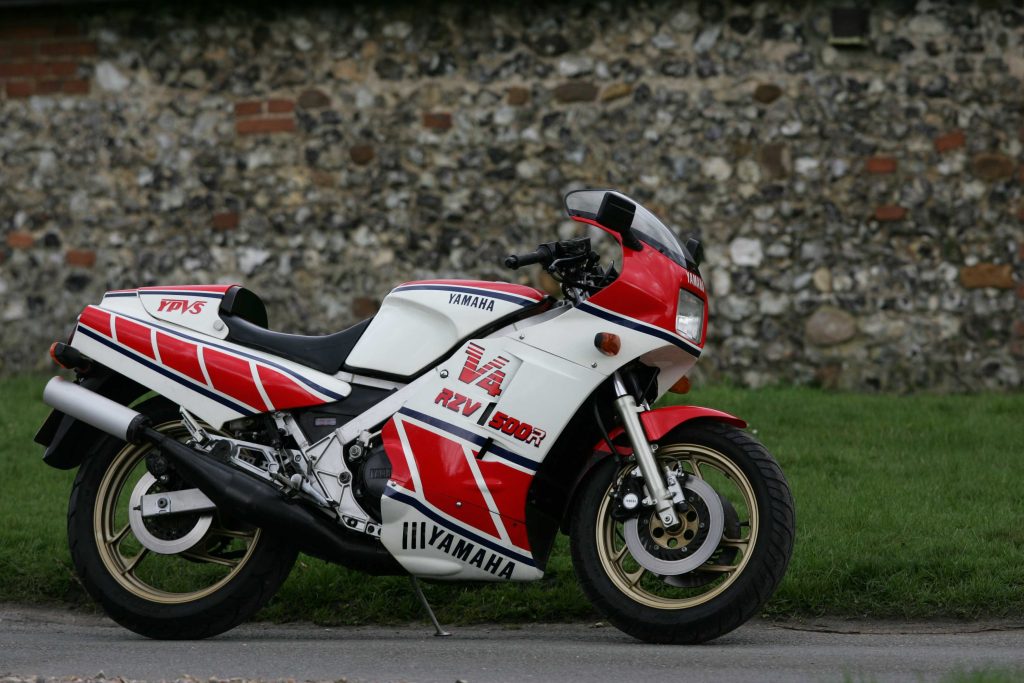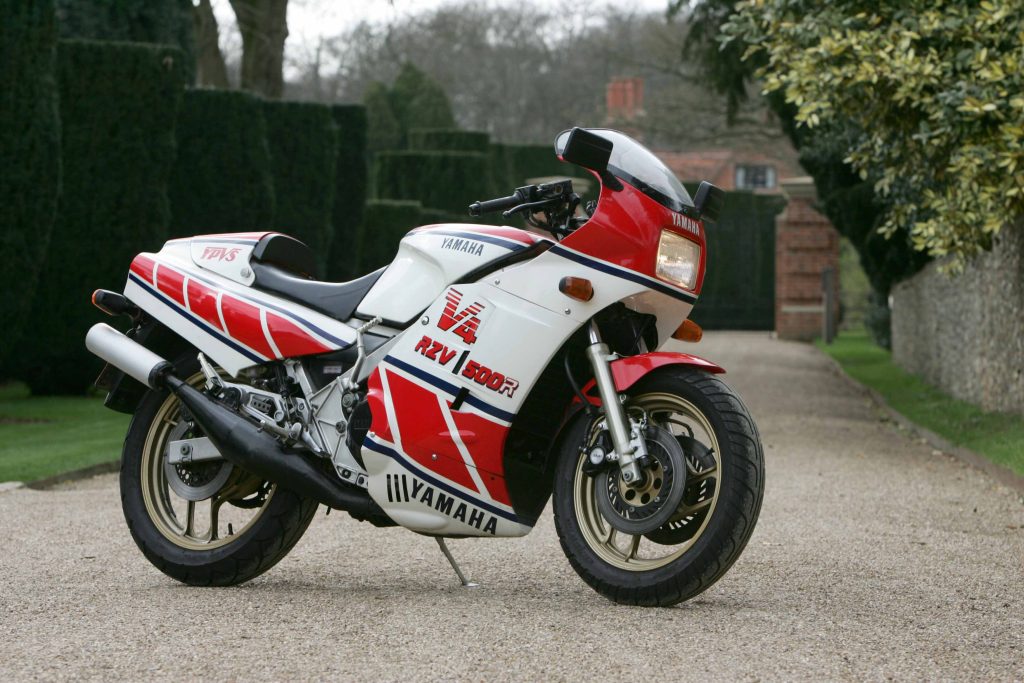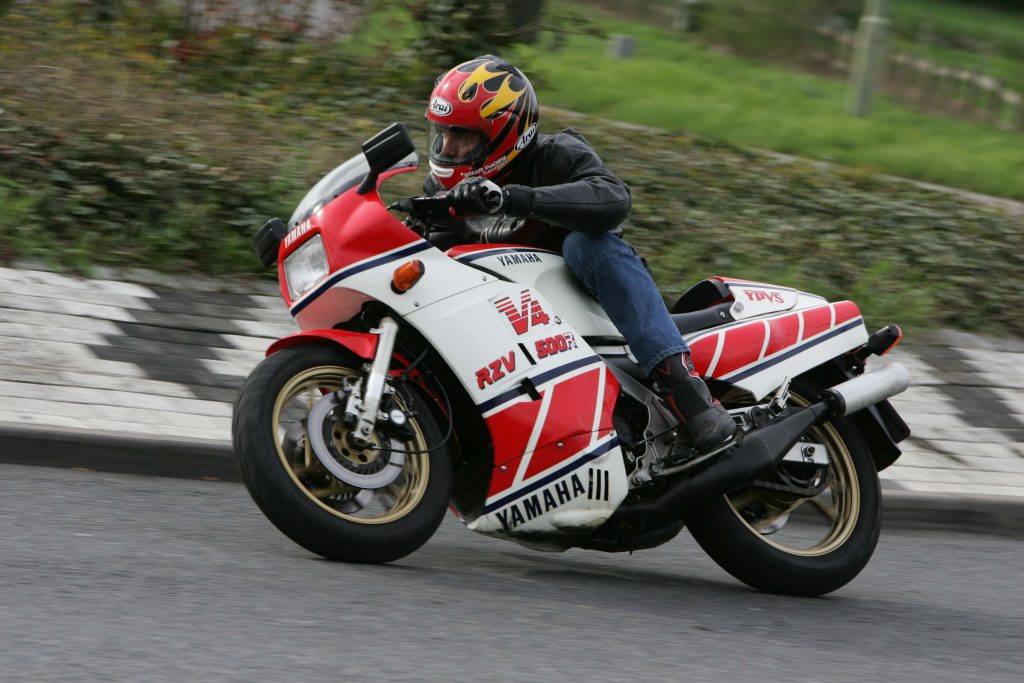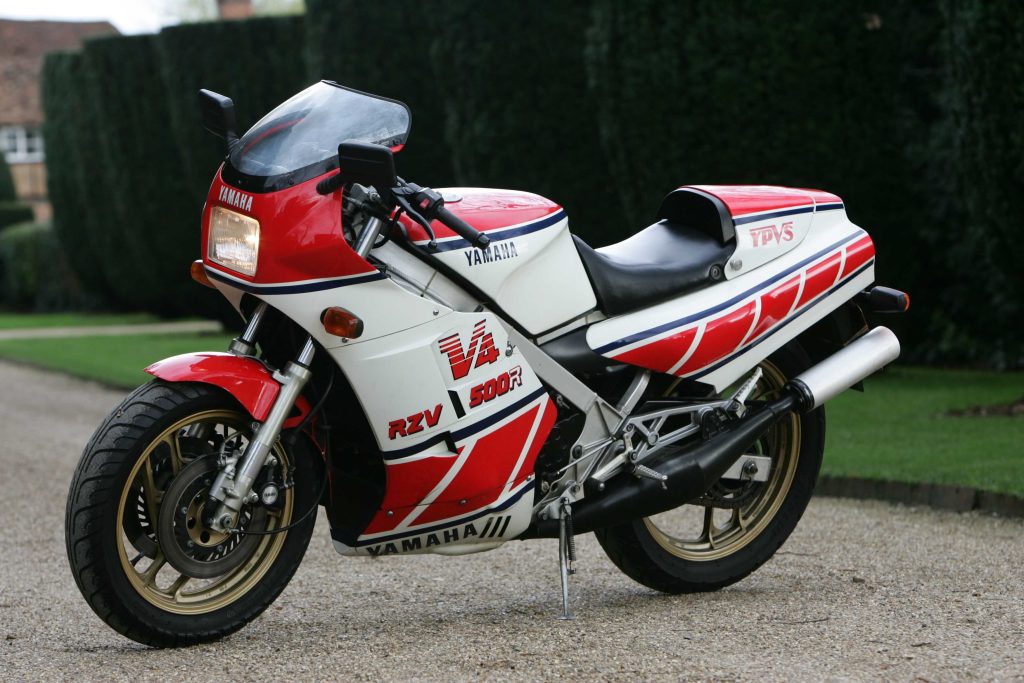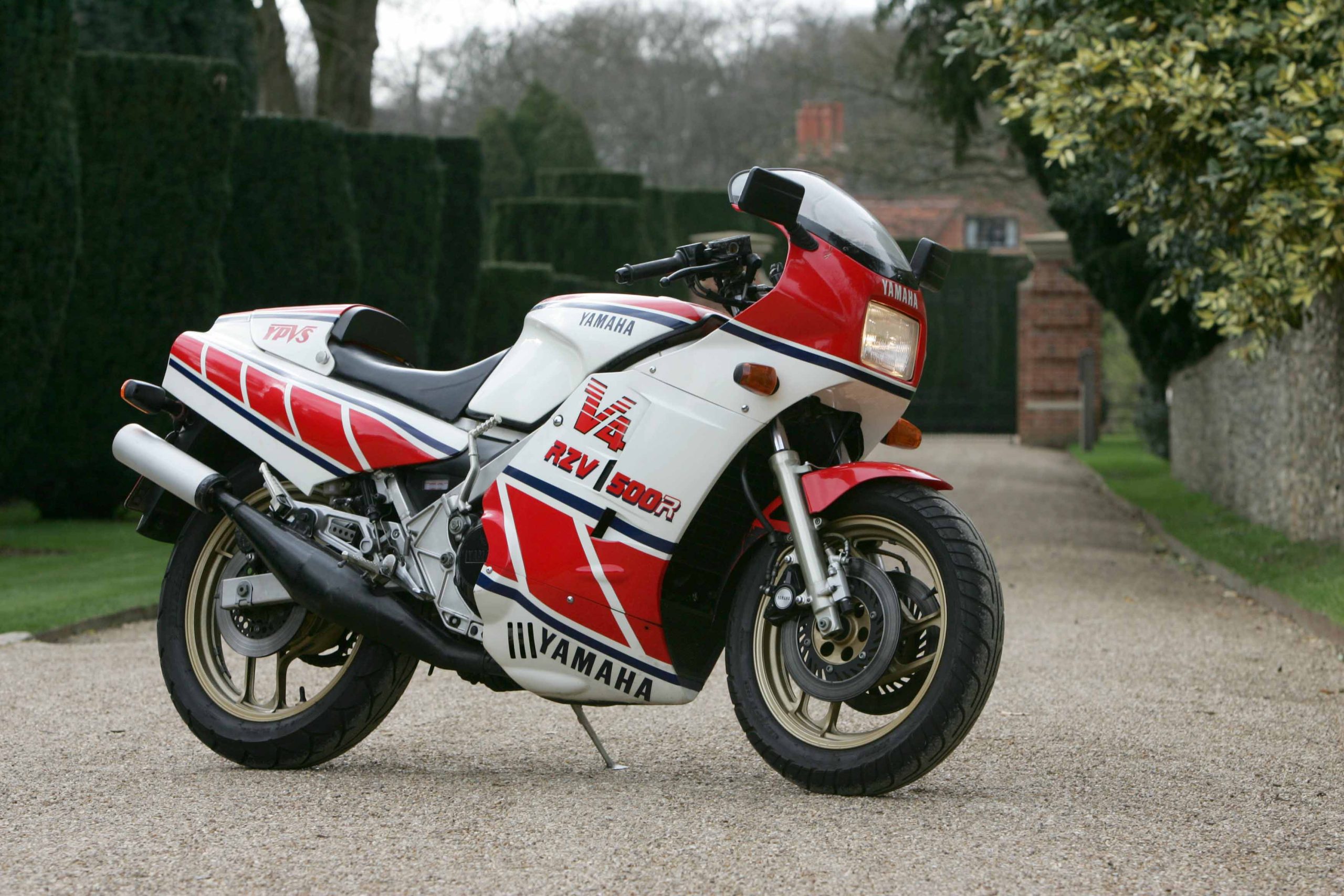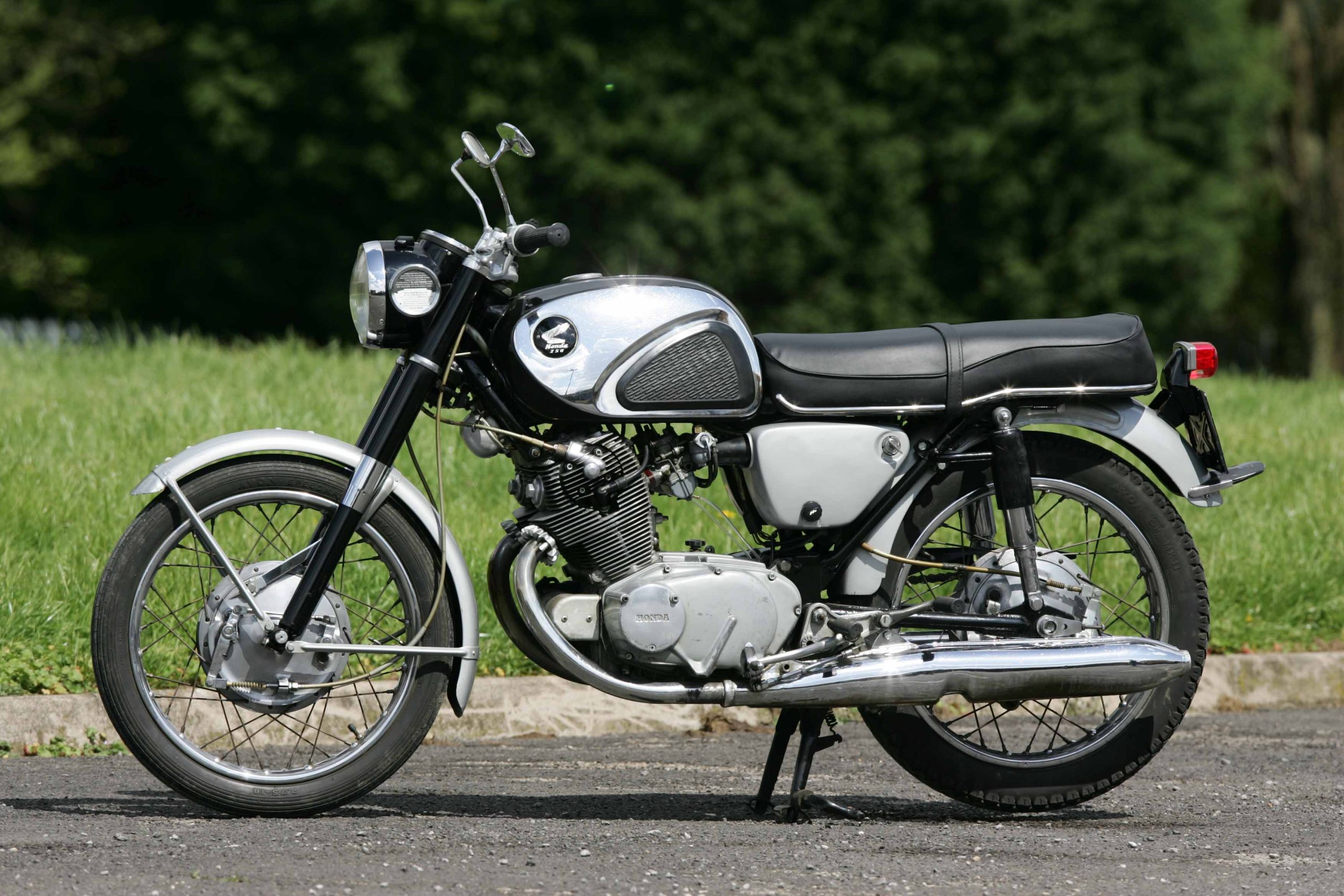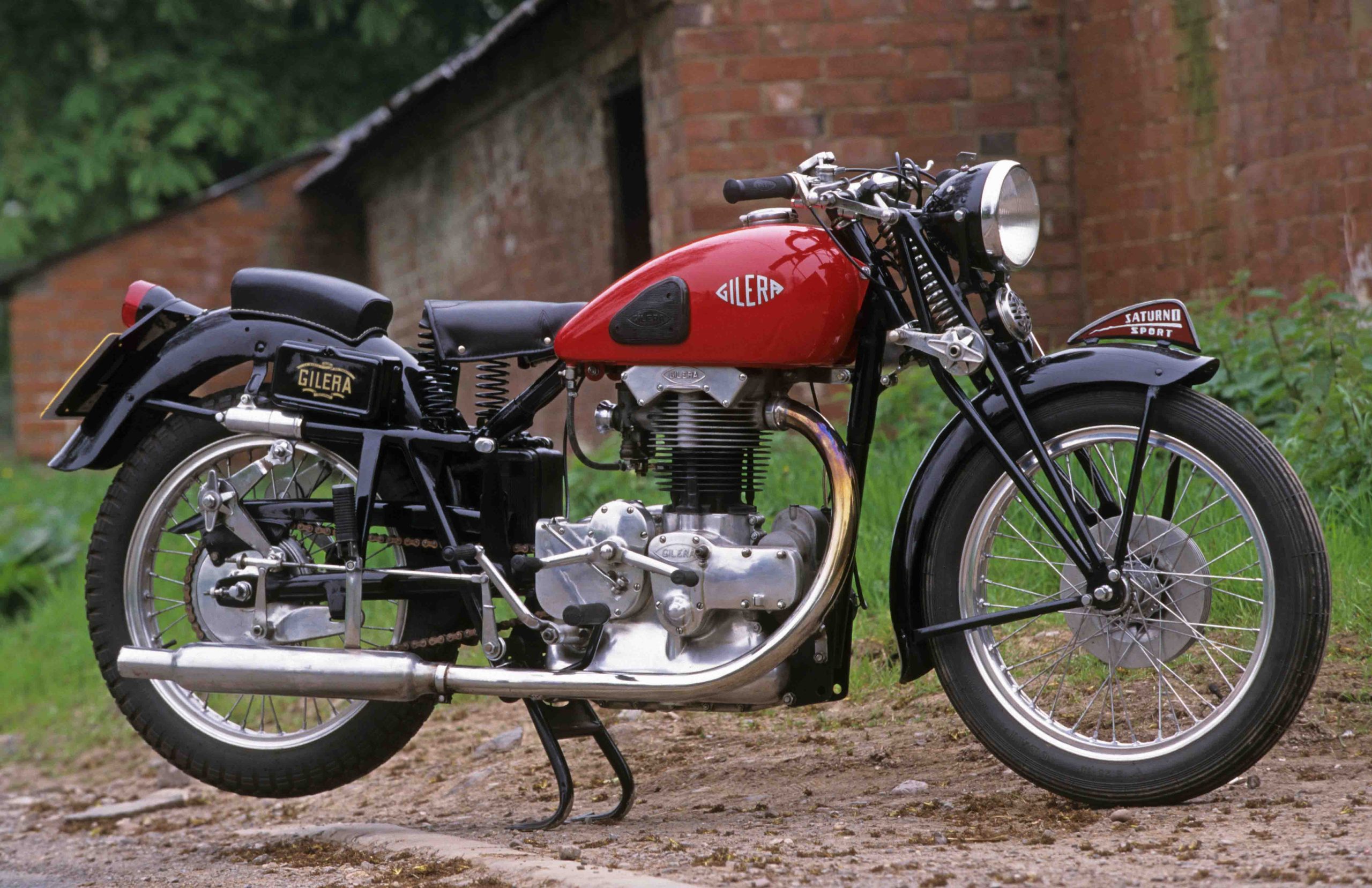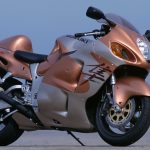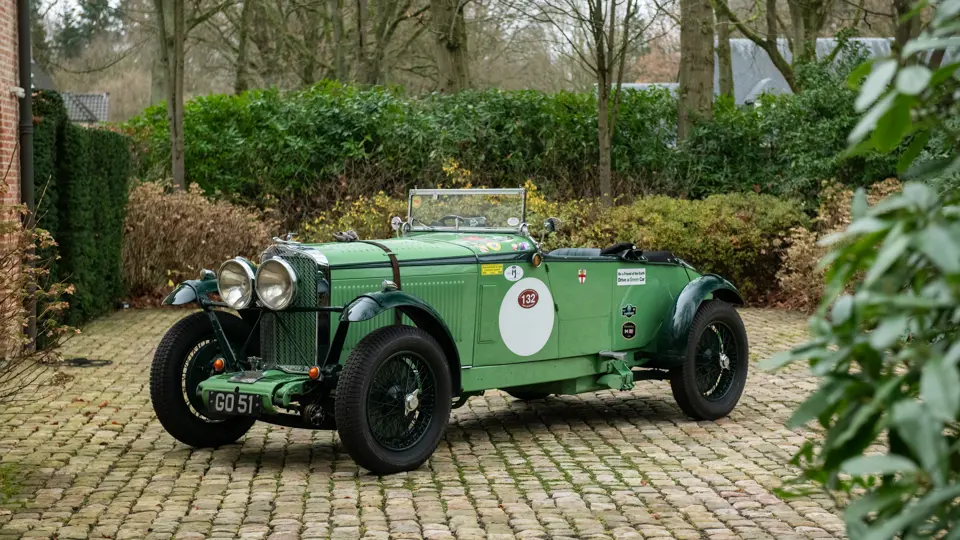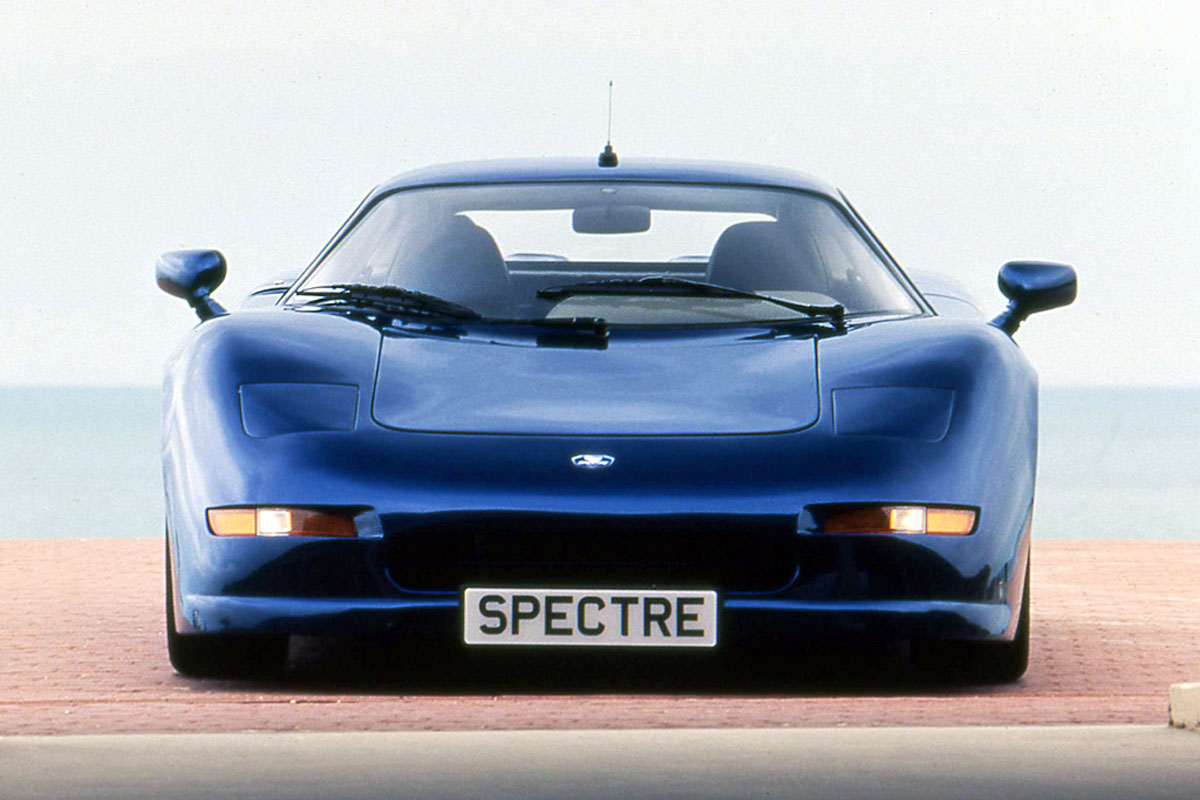Author: Roland Brown
Images: Roland Brown
It’s an indication of the excitement that surrounded the arrival of Yamaha’s RD500LC in 1984 that some motorcycle enthusiasts had been convinced that the two-stroke V4, a replica of the Japanese factory’s Grand Prix racer, had reached the streets a year earlier. In fact the “scoop test” on a magazine’s April 1983 cover had been an April fool spoof using a twin-cylinder Yamaha modified with two dummy cylinders.
The fake review had seemed plausible because rumours of a four-cylinder Yamaha race-replica had been getting increasingly stronger. A superbike sibling for the Japanese firm’s legendary two-stroke twin the RD350LC had long been the dream of its legion of fans.
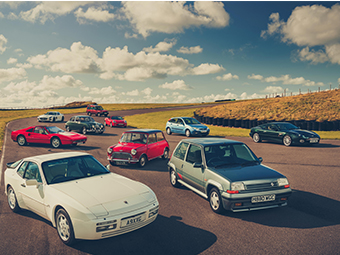
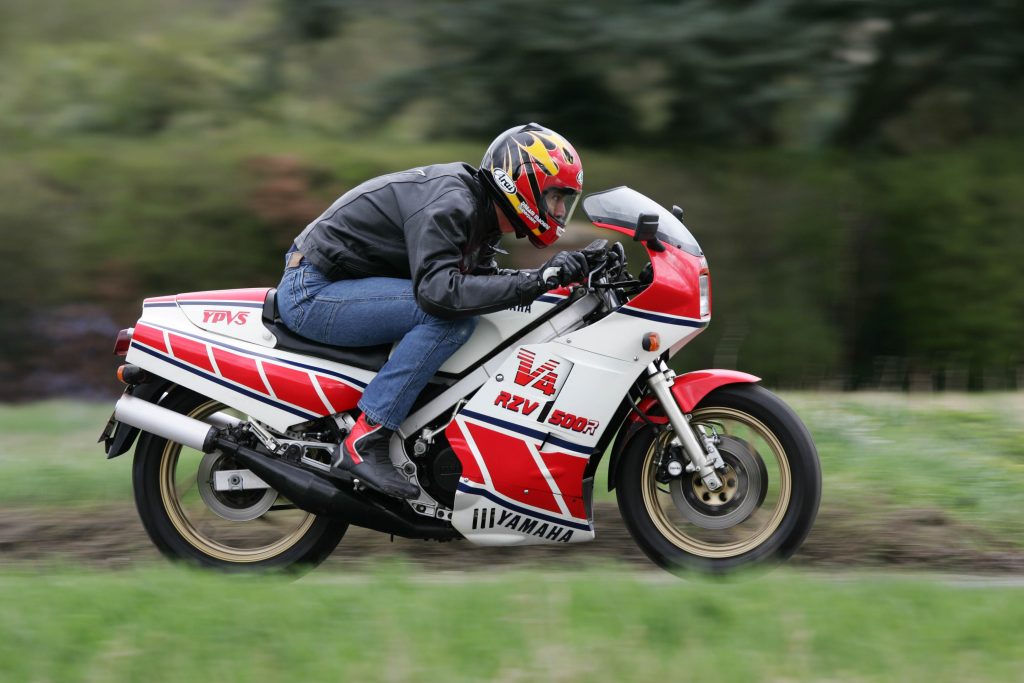
Anticipation grew when the real thing eventually reached the showrooms. Yamaha had made an impressive effort to replicate the red-and-white V4 missile that Californian ace Eddie Lawson was racing to victory in that season’s 500cc world championship.
Like Lawson’s “works” YZR500, the RD was powered by a twin-crankshaft V4 with cylinders spaced at 50 degrees. It had near-identical bore and stroke dimensions, and followed the racebike’s twin-crankshaft layout, and its use of exhaust power valves to boost midrange output.
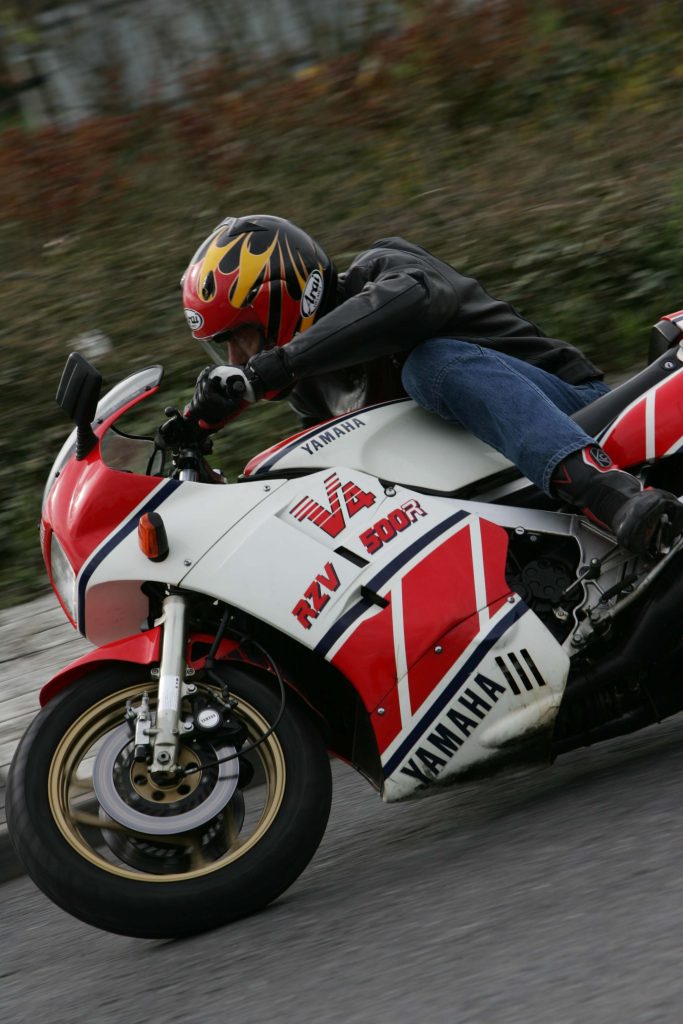
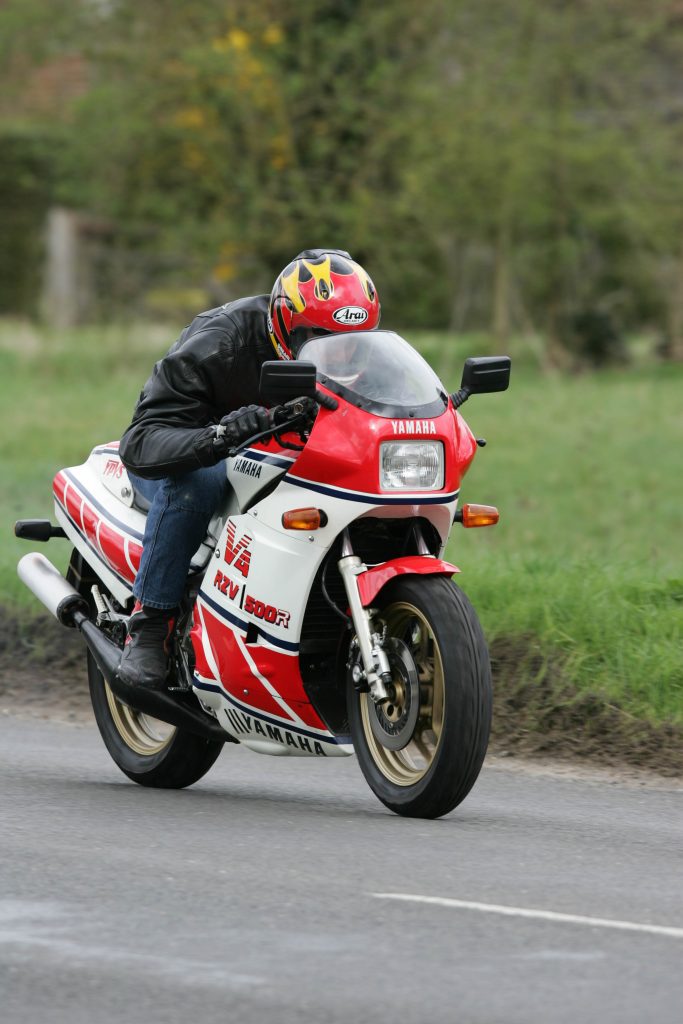
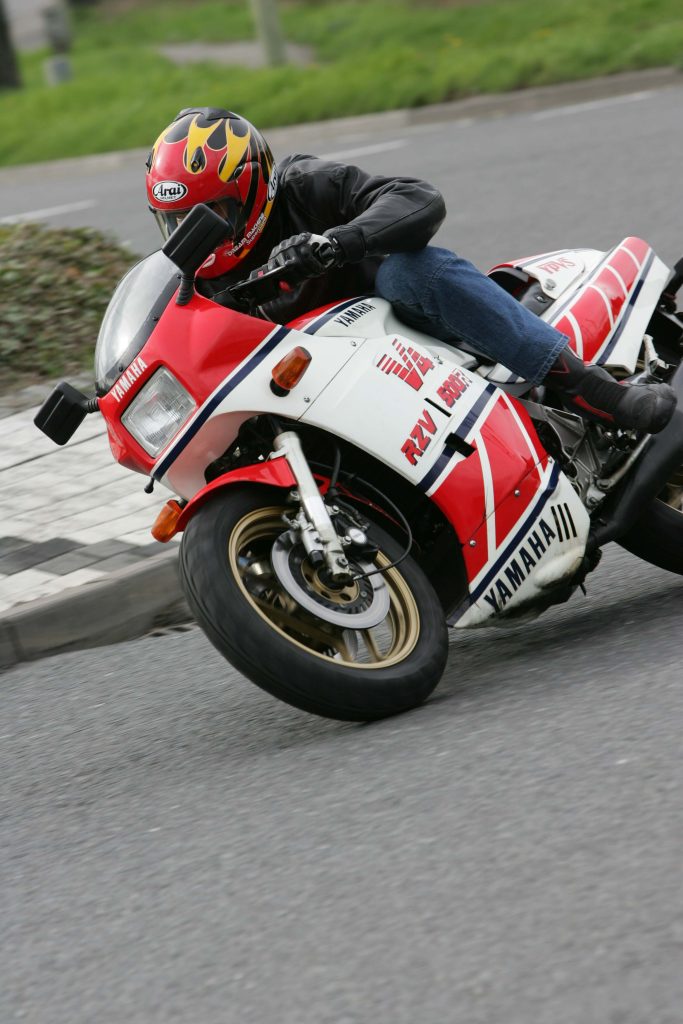
Many other parts were also heavily influenced by Yamaha’s exotic Grand Prix machines, including the full fairing and large, aerodynamic seat unit, plus the suspension combination of anti-dive equipped forks and monoshock rear suspension.
The one significant difference between Lawson’s YZR and the RD was that Yamaha used aluminium for the factory racer’s frame, whereas the production model made do with square-section, silver-painted steel. Bizarrely the visually near-identical roadster produced for the Japanese home market, named the RZV500R, also featured an aluminium frame.
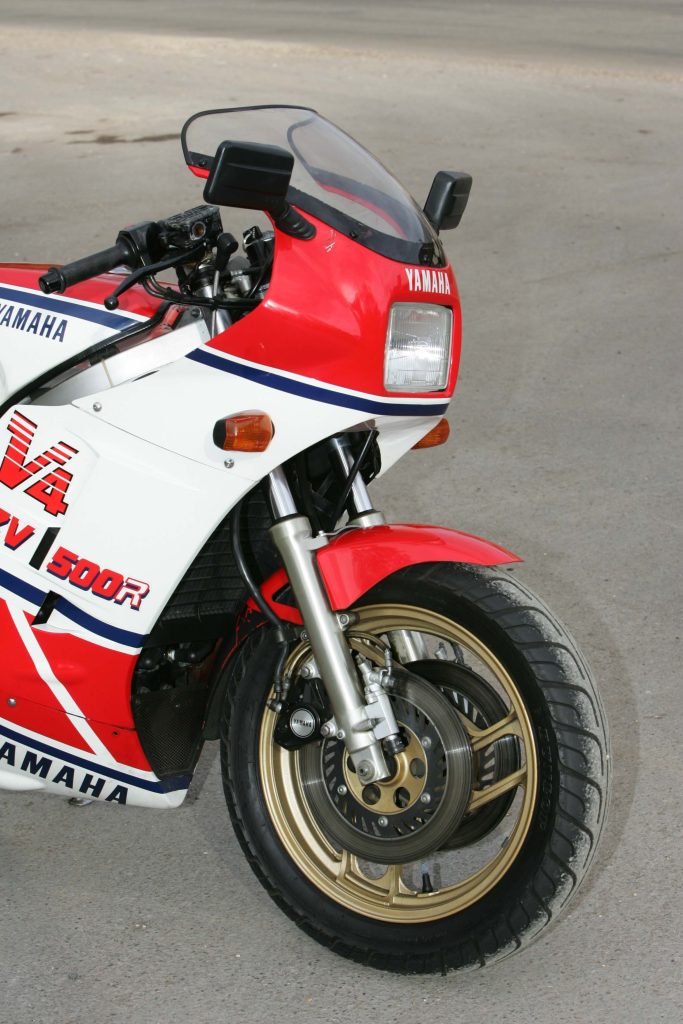
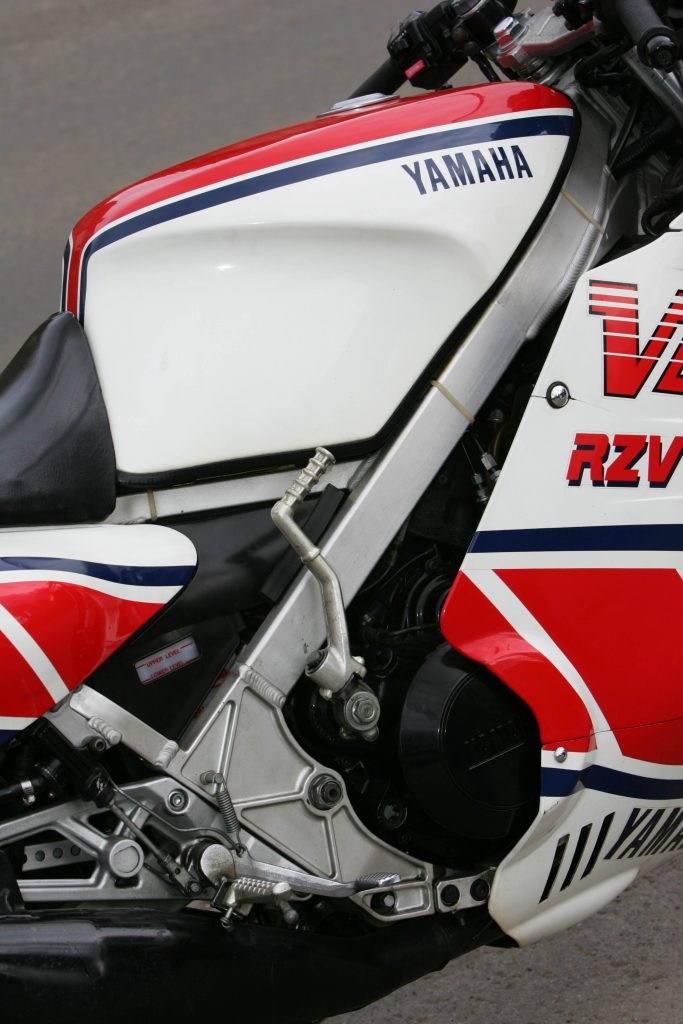
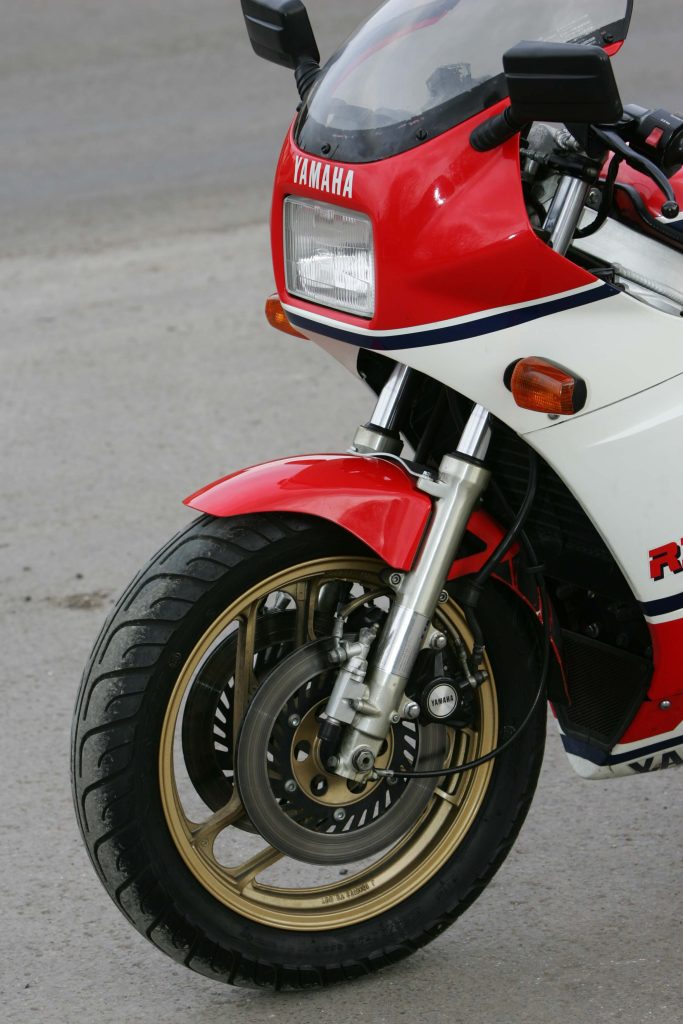
Many of those RZVs eventually made it to Europe, including this very clean example, which immediately brought back memories of riding the original RD in the summer of 1984, shortly after its launch. Much was familiar although the Japanese-market model has slightly different instruments, and damping adjustment knobs on the top of its forks.
The RZV also used aluminium for its top yoke, kickstart, footrest hangers and swing-arm. Along with the equally exotic touch of some magnesium engine cases, this reduced the RZV’s dry weight to just 173kg, a useful 7kg lower than the already lightweight European-market RD.
It wasn’t all good news for Japanese two-stroke fans, though, because the RZV engine was less powerful. Modified Mikuni carburettors and thinner exhaust pipes reduced its claimed output from the RD’s 87bhp at 9500rpm to 63bhp. This did not temper the demand in Japan, where the limited run of 1600 bikes was reportedly snapped up within a week of going on sale.
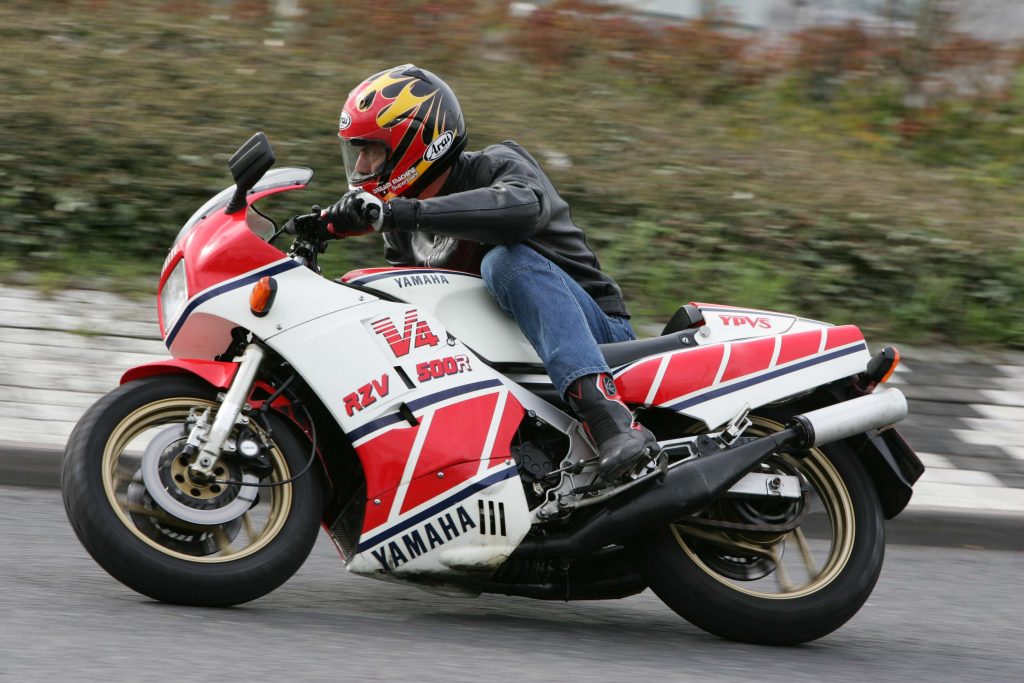
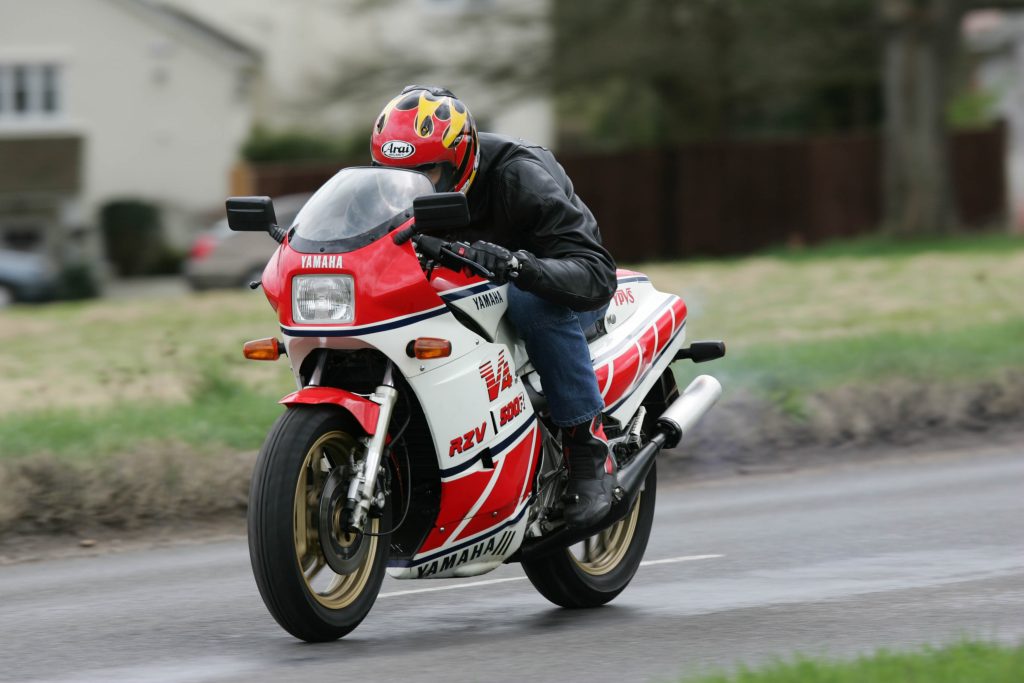
Years later, the RZV brought an instant reminder of previous decades when, after a couple of blips of its throttle and a kick on the starter, its engine fired up with a unique V4 two-stroke sound combining exhaust clatter with gear rumble – and with pungent, evocative smell of two-stroke fumes.
Along with its engine layout, the Yam’s ergonomics also marked it down as a sports bike from a different era. With a reasonably large and protective screen and fairing, clip-on handlebars mounted above the top triple-clamp, plus a fairly low seat and footrests, the RZV had the generous weather protection and relatively upright riding position of a modern sports-tourer rather than a super-sports machine.
Its racetrack breeding was clear, though, as I headed off through light traffic, immediately conscious of the tall first gear in the close-ratio six-speed box. Those closely-spaced higher gears were needed, because almost all of the V4’s performance lived high up towards the 10,000rpm redline.
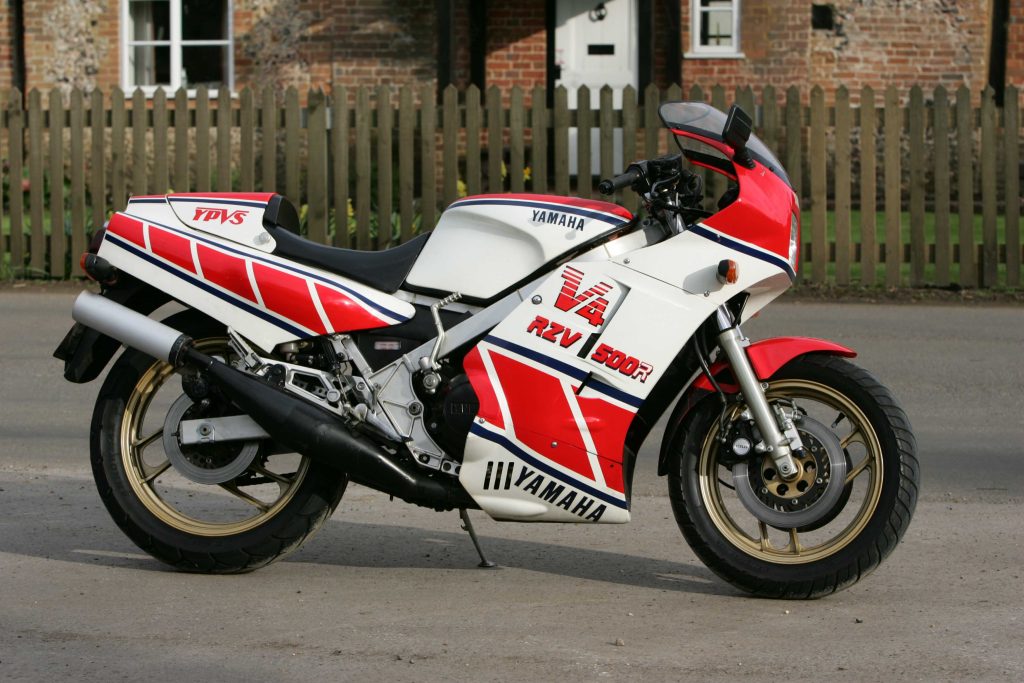
The Yamaha ran happily enough at low revs, its engine whirring mechanically and its tiny silencers emitting more smoke than noise. It pulled from below 2000rpm and carburetted cleanly through the midrange, without threatening to bog down – but without showing much interest when I wound back the throttle.
At 50mph a red light came on in the speedometer, a rather strange warning intended for Japanese riders. At that speed the RZV wasn’t yet into its stride in fourth gear, let alone top. It was only when the rev-counter needle hit 6000rpm that the Yamaha suddenly came alive, its exhaust note hardening to a shriek and the bike suddenly ripping forward with arm-stretching, grin-inducing enthusiasm.
The zone between that point and the redline was where the bike had to be kept in order to deliver the performance and enjoyment of which it was so capable. I remember the RD feeling quick when new, but was still pleasantly surprised by the way that this RZV hurled itself towards the horizon.

That’s despite this bike being the less powerful Japanese-market model, which in theory should have been slower than a European-specification RD500LC (or the Canadian-market RZV500R, which confusingly was really an RD with the alternative name and graphics). British magazines timed the RD500LC at just under 140mph, so the RZV would probably have been good for nearer 130mph.
The RZV’s lighter weight worked to its advantage when accelerating, though. Surprisingly, American magazine Cycle’s standing quarter-mile best of 11.77 seconds at 117mph on an Japanese-market RZV was slightly quicker than rival title Motorcyclist managed on a Canadian-specification, 87bhp V4.
Sadly for American enthusiasts, those test bikes had come from foreign markets for a reason. The two-stroke was banned in the States on emissions grounds, rather ironically given that Yamaha’s recent 500cc championship-winning heroes Kenny Roberts and Eddie Lawson were both from California.
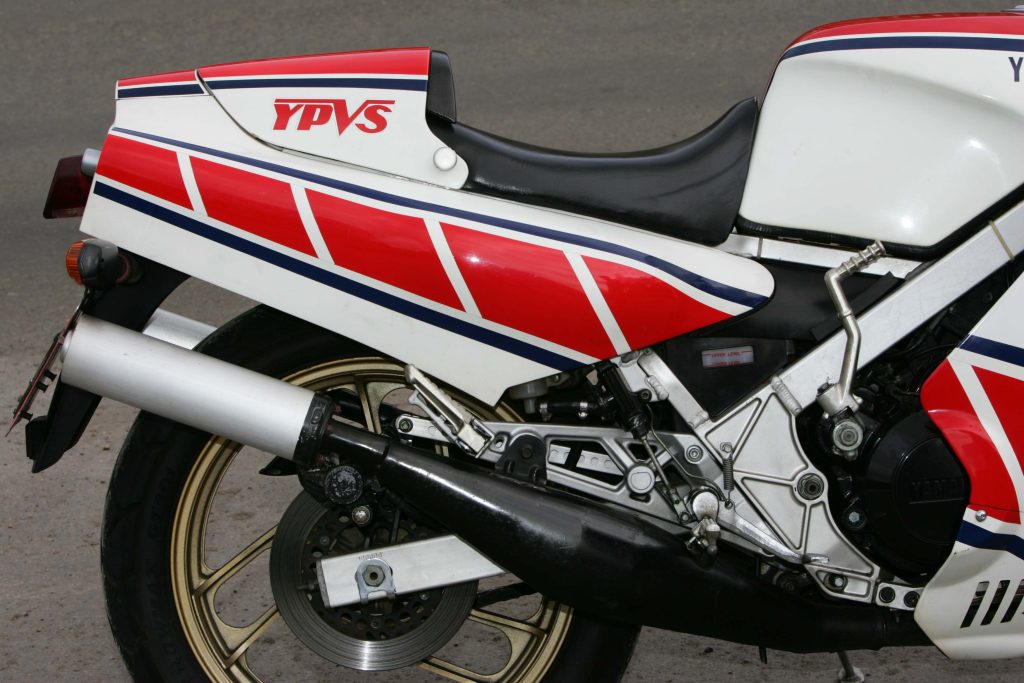
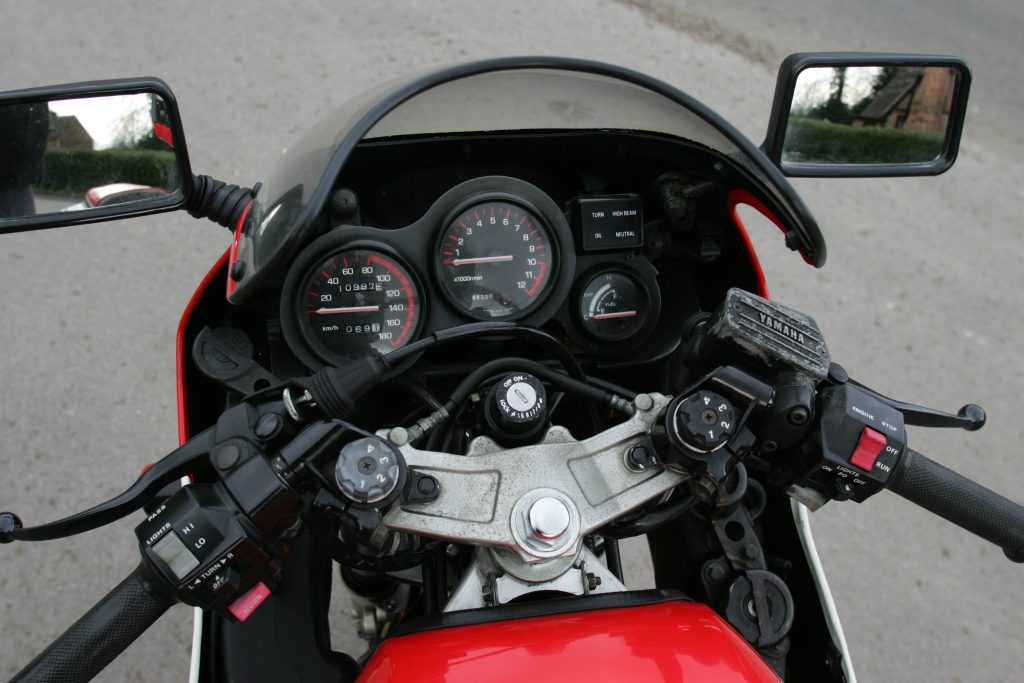
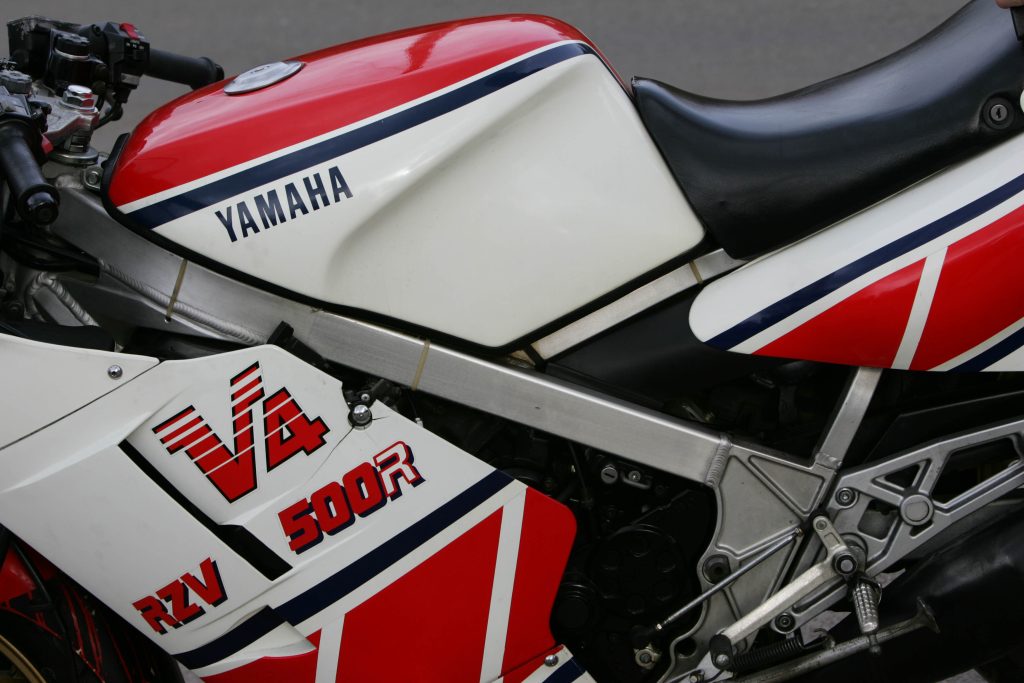
If the V4’s engine performance more than lived up to expectations, then so did its chassis. That’s despite the fact that the way in which the RZV’s frame follows the shape of its steel equivalent, without taking into account aluminium’s different properties, revealed Yamaha’s inexperience with the lighter metal. (Lawson’s 1984 championship-winning YZF500, code-named OW76, used much wider, stiffer aluminium spars than the previous season’s bike.)
The roadster’s cycle parts were state of the art in the mid-Eighties. Both the aluminium and steel versions of the frame were sufficiently rigid to cope with the engine’s output, and the shared combination of fairly conservative steering geometry and fat-tyred, 16-inch front wheel (the GP-derived fashion back then) delivered neutral if not lightning-quick steering.
The single rear suspension unit, held horizontally under the engine instead of diagonally as on the racebike, had aged well and gave no problems. Unfortunately the same couldn’t be said of the front suspension, which had been on the soft side when the bike was new, and hadn’t improved with age.
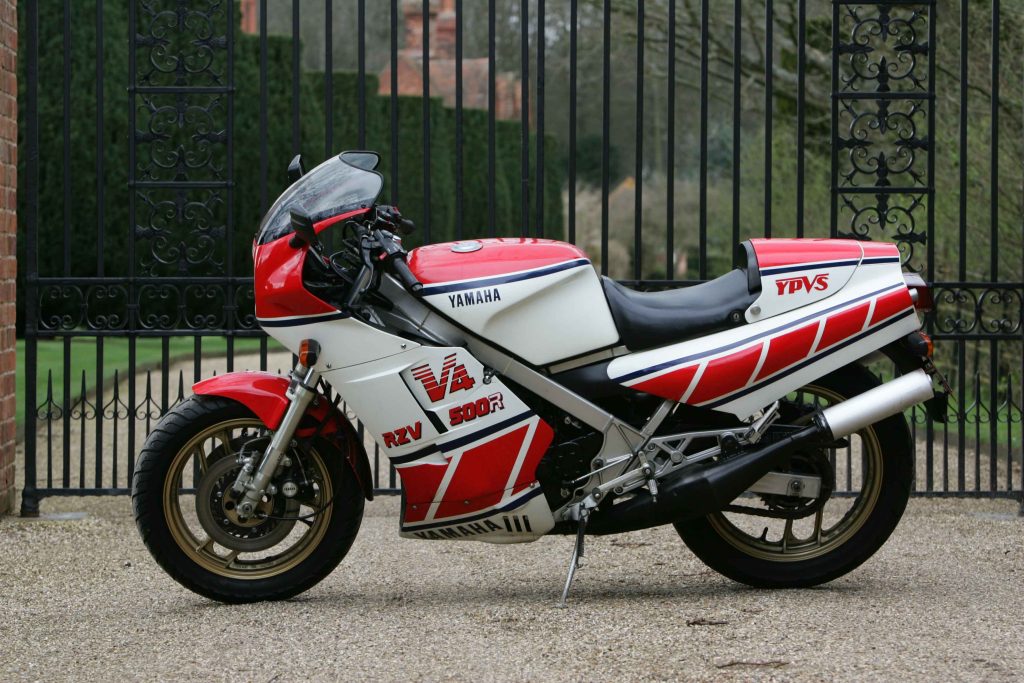
The anti-dive system couldn’t prevent the forks bottoming out under hard braking. Turning the big damping-adjustment knobs on the fork tops didn’t help either. At least an owner would have the option to upgrade the forks with stiffer springs and new oil, to give a fine-handling bike.
One area where the Yamaha was definitely not deficient was that front brake. Regarded as second to none in its day, it was still tolerably powerful even by modern standards, albeit without the benefit of ABS.
The V4 two-stroke also has inherent drawbacks of thirst – less than 30mpg under hard use – and resultant limited fuel range, plus a slight vibration that becomes more noticeable at steady cruising speeds. You really need to be doing about 90mph before the engine comes alive in top gear.
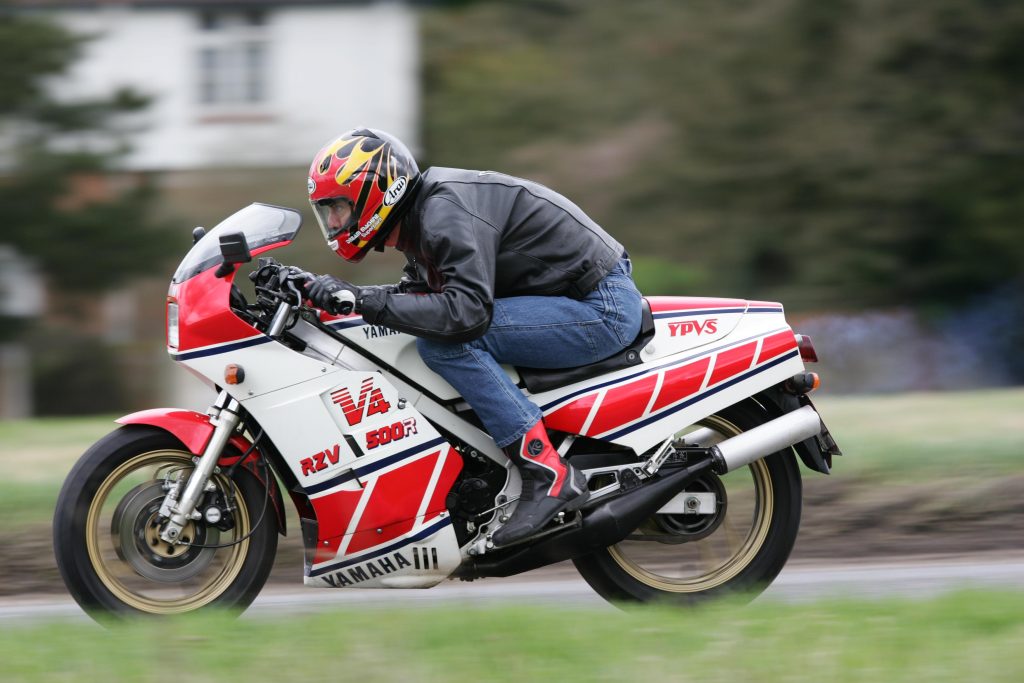
That, of course, does not make for a particularly practical motorbike. The RD500LC starred on the September 1984 cover of Bike, where I worked at the time, with the line: “Take a good look – there ain’t no way you’ll get this close again.”
Inside, the test’s headline was “Licence to Destroy”, and the standfirst warned that the race-bred Yamaha would “scream past everything on the road – until your luck runs out with the law”. The RD was clearly too much for some, even 40 years ago when attitudes were more relaxed and speed cameras hadn’t been invented.
Partly for that reason, the Yamaha was not a sales success in Europe. Despite all the enthusiasm for the idea of riding a lightweight V4 race-replica, most riders preferred to play safe with a bigger, more versatile four-stroke such as the firm’s own FJ1100. The two-stroke was expensive, and it was simply too racy and singleminded for most who could afford it.
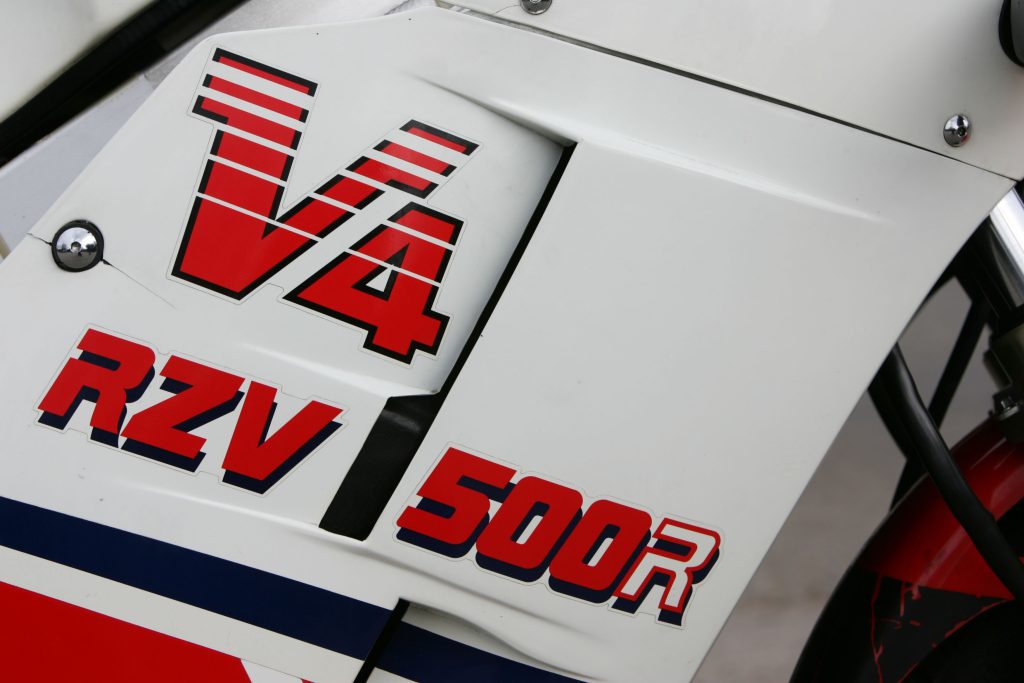
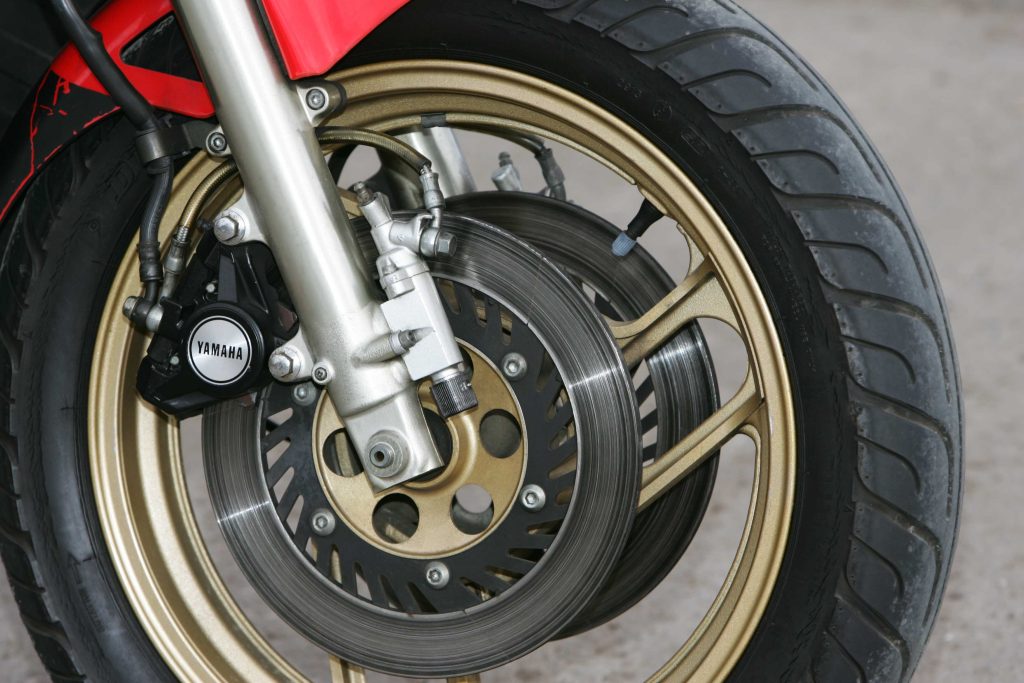
All these years later, though, the V4’s singleminded character and relative rarity mark it out as something special. And its attractions remain very much intact: racetrack looks, raw acceleration with a unique two-stroke scream, plus the light weight, agility and stopping power that contribute to an exhilarating ride.
Yamaha’s V4 is that rarity of a “classic” motorcycle that gets better the harder it’s ridden. Although the 500cc two-strokes disappeared from Grand Prix racing more than two decades ago, the lookalike streetbike that they inspired still shines as brightly as ever.
